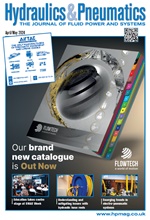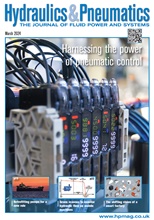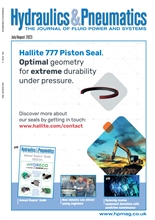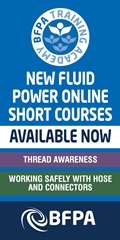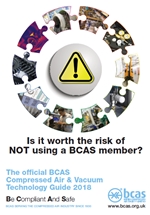- Home » Editorial » Hydraulics
Keeping safe and productive

By Rob Johnson, technical director, Fortress Safety.
I spend my time looking at technologies and applications to ensure manufacturing plants are efficient and the people who work in them are kept safe. It is encouraging to see that both these things are improving; workplaces are becoming safer and more productive.
We have been able to automate tasks and enbed control of the process and safety together in the control system. Operators are no longer required to disconnect the isolator to a manufacturing line before carrying out a task. Instead, the control system brings the line to an appropriate point and specially designed parts of the control system ensure hazards are not present while the operator is allowed access.
This concept of functional safety is not new. The type A standard that gives guidance on this approach was first published in 1998. Moreover, thanks to effective education by leading manufacturers of safety relays and safety PLCs these devices are now ubiquitous in control panels.
Three stages
Functional safety systems are based on three stages: inputs, logic and outputs. A typical system comprises an interlock or light curtain monitored by a safety relay or safety controller opening a contactor or holding a motor drive in a safe state.
The electrical engineer for the project will design relevant components into the control panel and carry out calculations to ensure the reliability of the system and validate its operation, proving that faults in the system are identified and there is redundancy in place to keep everyone safe under fault conditions.
The fluid power connection
So far, this article looks a little out of place in a periodical for the hydraulics and pneumatics industry. There have been references to PLCs, light curtains and control panels, all of which are electrical, and it is this that concerns me. Fluid power presents hazards the same as electrical energy does. Injuries caused by crushing or fluid injection can be devastating.
However, my experience from visiting sites is that these risks are not dealt with equally. I regularly see dual-channel interlocks and light curtains on the guarding, the panel contains the yellow or red flashes on the controller indicating safety devices and the contactors have redundancy all correctly monitored. However, the output from this safety system goes to standard valves, with no monitoring.
It only takes a single fault, a small piece of debris in the media stopping a spool from shuttling for example and whole safety system is defeated, exposing users to hazards. Although this paints a gloomy picture of fluid power being left behind by its electrical counterparts, there are major strides being made to correct this.
British Standards are considering a new document, giving more guidance than is currently available in ISO4413 and 4414. I have been working with the British Fluid Power Association (BFPA) to raise awareness in the industry, and with the National Fluid Power Centre to give the best training we can to the hundreds of engineers and apprentices that undertake its courses.
-
Smart Manufacturing & Engineering Week
05 - 06 June, 2024
NEC, Birmingham -
HILLHEAD 2024
25 June, 2024, 9:00 - 27 June, 2024, 16:00
Hillhead Quarry, Buxton, Derbyshire UK



